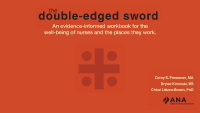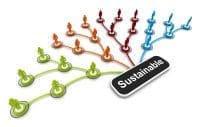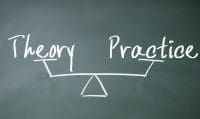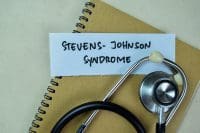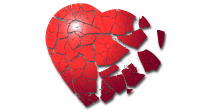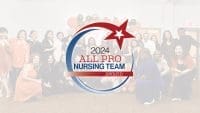Children are people with small hearts and big emotions that often come from the people around them, particularly family members. As a pediatric nurse and mother of two girls ages 6 and 4 in the Sandy Hook, Connecticut community, I am seeing firsthand the effects of psychological trauma among children and families in the aftermath of the school shooting that took place on December 14, 2012.
Psychological trauma is the unique individual experience of an event or enduring conditions in which the individual’s ability to integrate his or her emotional experience is overwhelmed. Our job as nurses is to ensure that families are supported and nurtured as they heal and begin their road to recovery. When trauma occurs unexpectedly in a community that seldom sees anything but playgrounds, parades, and ice cream shops, recovery efforts are complicated. The disorganization and chaos that occurs in the immediate aftermath of a tragedy is difficult to sift through, and even as a healthcare provider I felt paralyzed. Nothing is more debilitating than not knowing what to do next for your family, for your community, and for your friends.
When trauma occurs in a community we nurses have the experience, the knowledge, and the ability to help our neighbors and friends heal. All too often the question is how and where to start? Perhaps many of us think we ought not to, because it seems too close to home. Reflecting back to the aftermath of our tragedy, I can share seven major factors that help recovery take place. Here is a closer look at each of them.
Care for yourself. Safety is stolen from communities that are victim to human-inflicted trauma. Teaching community members to take part in self-care and self-comforting activities are strategies that may ensure a renewed sense of safety. Managing symptoms of stress such as sleeping difficulty, stomachaches, fear of something happening to loved ones, jumpiness, unwarranted anger outbursts, inability to focus on schoolwork, lack of appetite, crying, or being withdrawn is essential. Further recovery work cannot happen until symptoms are recognized and addressed.
A victimized community feels vulnerable, and much like a chronic back injury, the vulnerability will always be there. But it’s imperative to prevent further injury, helping to increase one’s sense of safety and allow self-preservation. That includes knowing when to take action and when to sit back. For example, some Sandy Hook community members have expressed feelings of discomfort for having voiced their political viewpoints on gun control, mental health, long-term recovery programs, school budget proposals for new building planning, and security initiatives. I see walls being built between friends and neighbors due to the above-mentioned controversial topics. Many have agreed to disagree, which can be a positive step toward healing.
Provide developmentally appropriate information for children. Educating our community members as to what is developmentally appropriate to convey to a child is an important step of the recovery process. This concept is basic when it comes to normal physical growth and development as we teaching our little ones to sit, walk, eat, and read. We would never expect a 1-month-old to walk, nor would we expect a 6-month-old to learn to read. When it comes to speaking to children about traumatic events, death, and loss, it is our responsibility to help parents to understand what is developmentally appropriate for a child to process. As nurses, we are aware of many resources that may be useful for children to process the traumatic event and to begin the steps to recovery. Therapeutic modalities include play therapy, expressive art therapy, and somatic therapies.
Recognize where someone is in the grief process. It’s easy to forget what grief looks like and what it entails. We must recognize the different stages or phases of grieving—denial and shock, anger, bargaining, depression, and acceptance. Rushing into or out of phases is not healthy. A natural progression facilitates healing to take place. It’s also important to know that people don’t always move sequentially through the stages, nor do they always experience all of the stages.
Little children who are grieving often portray acts of anger, and need parents, teachers, and healthcare providers to help them in their grieving. My daughters remind me every day that they have accepted what has happened in their school. Although sad at times and missing their friends, they are at peace that the angels of Sandy Hook are in heaven now. Many times it is the innocence of my little ones that become my “a-ha” moments in life. The moments allow me as a mother and as a nurse to move forward in the healing process.
Tap into previous coping mechanisms. In helping our communities heal after trauma we must determine what has worked in the past. What coping mechanisms have families’ used in previous times of loss or sadness? We may find that the tools are already there for many families. Our role may be to engage the coping mechanisms once again and help families mobilize resources.
One resource is the use of spirituality for reflection, self-care, hope, and resilience. Speaking as a mother who has endured watching one of my children through multiple life-threatening heart surgeries, my faith has always held my hand. My relationship with God has allowed me to have peace, reduce anxiety, and to accept the things of this world. I am seeing this in our community. Many parents describe that they lean on God in times of despair.
Establish trust. Trust is critical in restoring safety. Trusting each other is a building block of establishing a therapeutic relationship. Establishing trust takes true discipline of listening and decision making when working with a traumatized community. Successful outreach programs and efforts to help in healing and posttraumatic growth can’t occur without trust among the parties involved.
This has been a difficult thing to ascertain for there are many differing hierarchies of grief settling in among our community. The impact of this tragedy has a large ripple effect starting with the families who lost their loved ones. The pain they feel must be like no other. Recognizing the pain was always at the forefront of my emotions, which allowed me to have perspective. The guilt that goes along with have a surviving child was raw and hard to manage many times. I was in one of the ripples by having a child down the hall from the murderer, affected in a different way than the neighbor who lives on the other side of town.
It’s important to have empathy for the pain that each person in that ripple effect feels respected it and honoring it. Trusting that we can respect each other and allow for the emotions to be felt the way that they are is an important piece in allowing the town as a whole heal. Reconnecting and reestablishing the quaint community that we once were, allowing the walls to be torn down in this hierarchy of grief can heal. We can heal ourselves by ways of restoring friendships, establishing new ones, and allowing each other to know we are there for one another.
Use therapeutic communication. Therapeutic communication is a basic nursing skill we learn as first-year nursing students. We are taught to talk with our patients not at them, we are taught to be active listeners and to welcome silence, and to allow for reflection to take place with our patients. Grieving parents and survivors need these basic concepts of communication techniques during times of trauma and loss. I remember sitting with my friend as we wept together telling stories about her little girl, who died in the shooting. I recall the countless mornings that I stood outside in the cold after pre-school drop off letting moms talk about what it was like for them to mourn the loss of their child’s best friend, or of their schoolteacher. It was what I learned in my first nursing course “the art of nursing” that allowed for the quiet moments of silence, a hand on the shoulder, a reassuring nod, a hug, or a moment of weeping sorrow that connected me with the people around me.
Forge connections. As healthcare providers we have the ability to connect with the unreachable. The nurse in me started reaching out to the kindergarten class that my daughter was a part of and started social coffee hours as an informal support group. Allowing for free sharing of thoughts and emotions without judgment or ridicule was much needed in our community. The stigma of attending a therapeutic support group seemed to be a barrier in the community. Coffee hours have become avenues for sharing of information, reflecting on therapeutic work that is being done within families, ideas of what has been working, and a true sense of the community healing itself. For those family members who are not reachable in person, social media has been instrumental in allowing for community cohesion to take occur.
Nurses in the lead
Nurses’ ability to network with likeminded professionals and laypeople is essential in achieving posttraumatic growth in our communities. It is pertinent to the well-being of our traumatized communities for nurses to be at the forefront of the rebirth of our community. Historically, nurses have mobilized societies in wellness efforts and have been instrumental in being change agents. Leading our broken communities by way of grassroots efforts we also heal. Sandy Hook will never be the same; however, we are committed to bringing the light back into this town and casting out the darkness that invaded us on December 14, 2012.
Anka Roberto is a pediatric nurse who lives in Sandy Hook, Connecticut and a Sandy Hook Elementary School mom.





